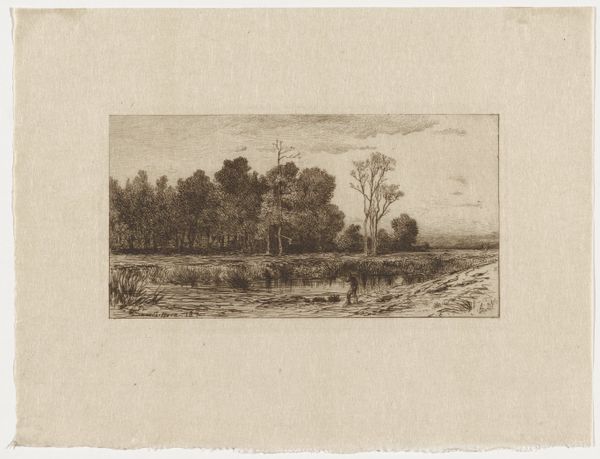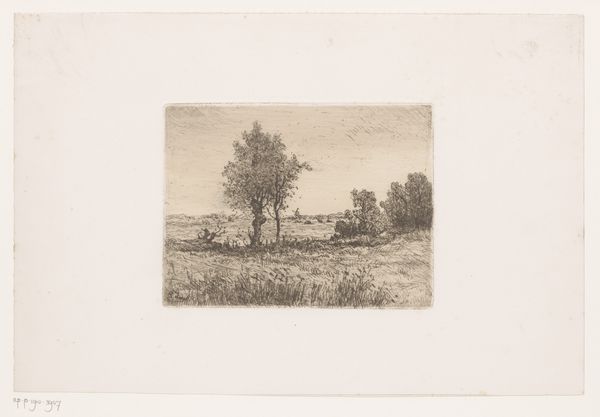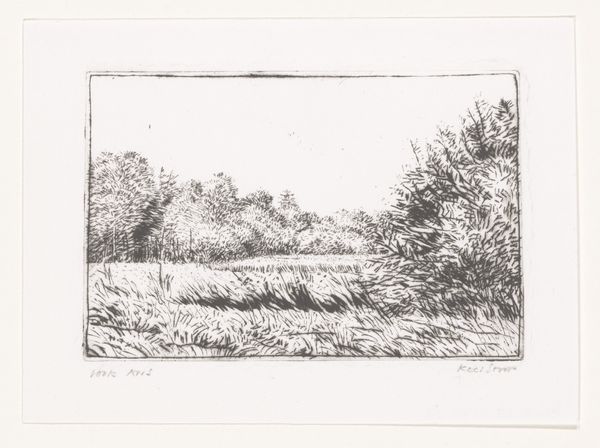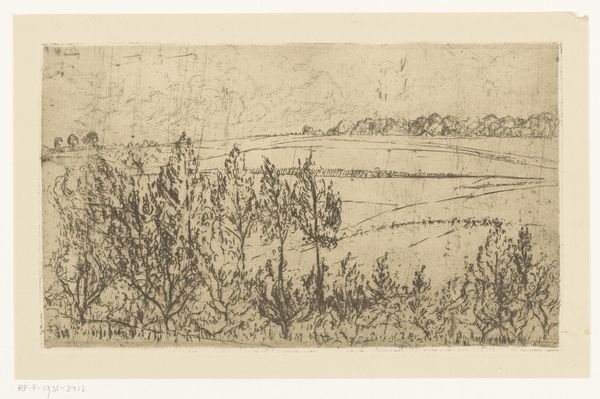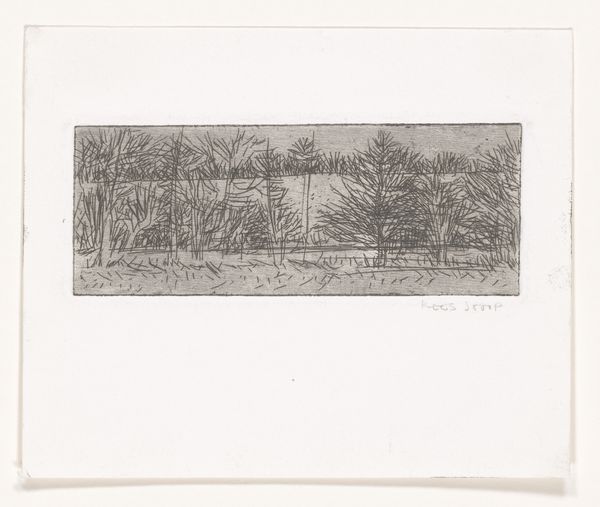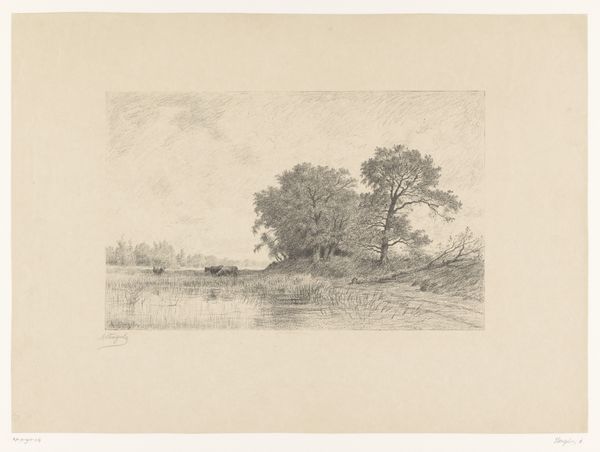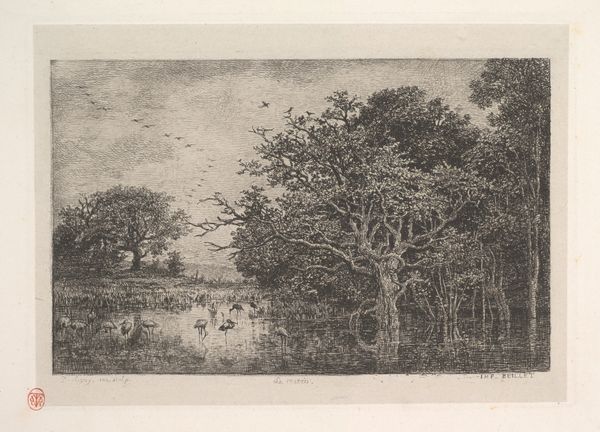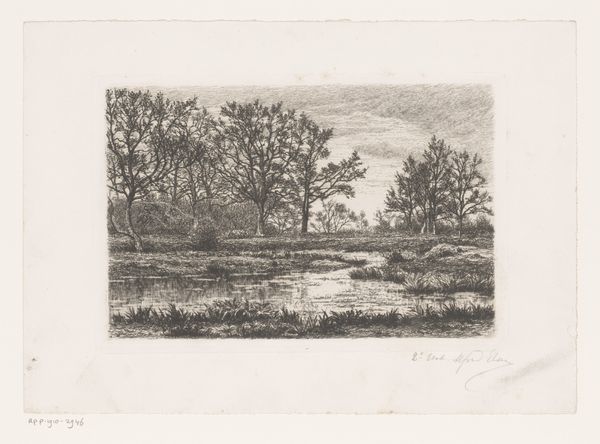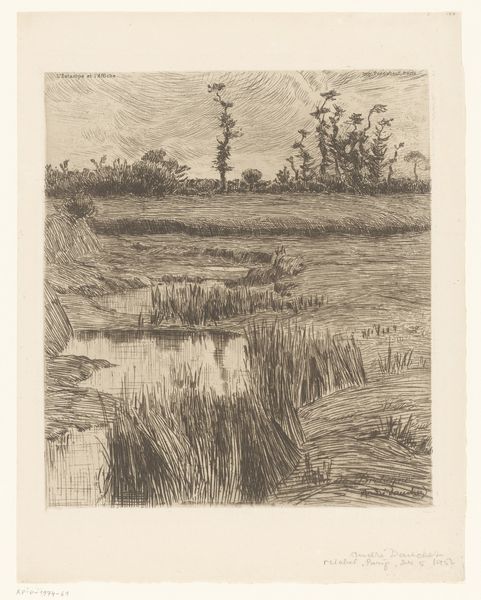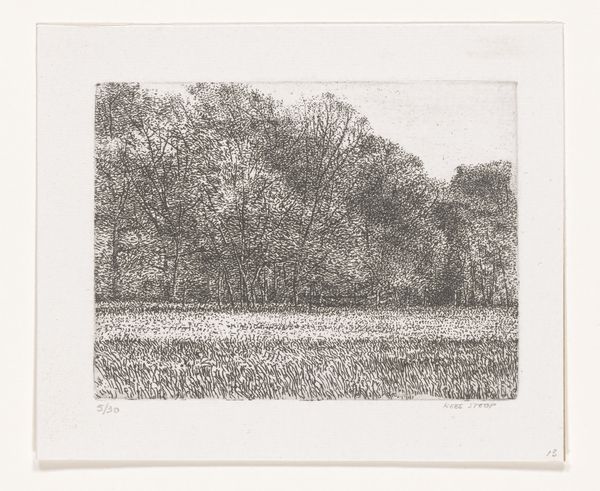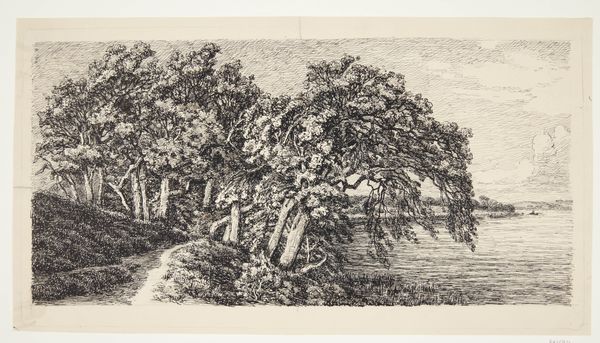
drawing, paper, pencil, graphite
#
drawing
#
natural shape and form
#
organic
#
organic shape
#
landscape
#
paper
#
plant
#
pencil
#
line
#
graphite
#
realism
Dimensions: height 108 mm, width 154 mm, height 80 mm, width 146 mm
Copyright: Rijks Museum: Open Domain
Curator: The overwhelming impression I get is a feeling of controlled wildness. There’s something both restless and very calm in the marks that build up the image. Editor: Here we have Kees Stoop’s drawing, titled “Hoog gras” or “Tall Grass” created between 1944 and 1990. It is crafted with pencil and graphite on paper, now residing here at the Rijksmuseum. Curator: Knowing that it’s pencil and graphite shifts my perception. I am drawn to the marks made, those deliberate linear movements creating depth, texture. It makes me think about the production of images and how readily available these raw materials would have been in that era. Editor: Exactly. Stoop lived through extraordinary periods of economic crisis and political conflict. This drawing can be interpreted as a return to the fundamental: finding solace in the depiction of landscape as something unaffected and perhaps even indifferent to human events. The selection of inexpensive material says something about artistic and societal access to making images, who can produce them, what they choose to depict. Curator: Looking at the way Stoop built up the scene, what stands out is how the mark-making itself constitutes meaning. He really coaxed a whole world from graphite and paper, almost as if he willed those tall grasses and distant buildings into being through sheer labour. This speaks volumes about Stoop's commitment. The subtle gradient from the detailed foreground up to a paler backdrop gives such presence. Editor: Precisely. While it can easily be framed as an idyllic scene of rural Netherlands, it subtly probes ideas of shelter. Are those buildings symbols of resilience? Is the seemingly endless grass something that speaks to an essential sense of place? Considering the potential period in which this work was started, during the war years, these are definitely worth thinking about. Curator: Considering the availability of graphite, versus paint, I imagine a society rebuilding, where something functional like a pencil can have this beautiful additional application in building worlds and creating some semblance of order out of uncertainty. Editor: And seeing this image in the museum context today allows us to bring these pasts into dialogue with our current moment, a really interesting exchange between material reality and representation. Curator: Indeed. Looking at Stoop's "Hoog gras," what stands out most is its simplicity. It serves as a potent reminder that art can flourish even under constrained circumstances. Editor: Absolutely, reflecting on the circumstances that shape artistic expression is something crucial that historical contexts offer us as insight to works like this one.
Comments
No comments
Be the first to comment and join the conversation on the ultimate creative platform.
